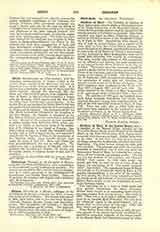

Chieti, Archdiocese of (THEATENSIS), with the perpetual administration of Vasto. Chieti is the ancient Teate, capital of the Marrucini, and now an important town of the Abruzzi, Central Italy. It is situated on a mountain, at the base of which runs the River Pescara. Though the Marrucini, like the Marsi and other kindred people, were originally enemies of Rome, in 304 B.C. they concluded a league with the Romans, which lasted until the War with the Allies, when Teate became a municipality. In the Gothic War it was captured by Totila; later it fell into the hands of the Lombards, from whom it was captured by Pepin and devastated. The Normans rebuilt the city, which thenceforth belonged to the Kingdom of the Two Sicilies. St. Justinus is venerated as the first Bishop of Chieti, and the cathedral is dedicated to him. Several of his successors are also venerated as saints, among, them Gribaldus (874), whose portrait is yet visible on the bronze doors of the monastery of St. Clement in the Island of Pescara. Another bishop worthy of notice was Giovanni Pietro Caraffa, who in 1524 resigned the see, and associated himself with St. Cajetan of Time in the foundation of the Theatine Order. Later Caraffa became pope under the name of Paul IV. Since 1525 Chieti has been an archbishopric, but has no suffragans. The archdiocese has a population of 300,500, with 113 parishes, 442 churches and chapels, 170 secular and 58 regular priests, 3 religious houses of men and 17 of women.
U. BENIGNI

